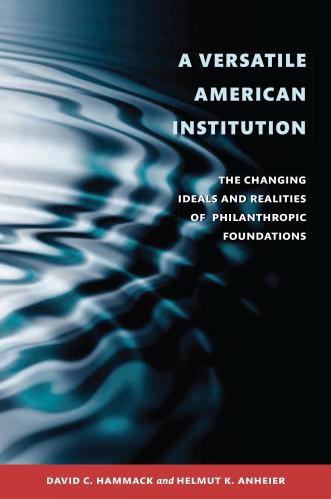Some of our brightest, most innovative thinkers are at start-up companies. But these companies often have a hard time raising capital. Venture-capital firms have become more cautious, unwilling to fund start-ups that have bright ideas but whose products are a long way from commercial viability. Venture capitalists consider such start-ups—such as early-stage biotech firms—too risky to justify their investment.
Charitable organizations can now step up and help. The U.S. Treasury Department has recently issued a proposal to clarify that foundations may buy stock or make loans to a commercial venture if its activities promote its charitable objectives. Legal uncertainties surrounding such investments had previously held back the risk-averse trustees at many charities.
And so, instead of making a $500,000 grant to a university, an Alzheimer’s foundation could buy $100,000 of stock in each of five private companies trying to find a therapy for Alzheimer’s. Or a foundation dedicated to improving financial access for the poor could make $100,000 low-interest loans to five microfinance banks in different countries.
Both of these investments would be permissible for a foundation as so-called program-related investments, or PRIs.
Foundations have traditionally fostered research through grants to universities and other nonprofit institutions. They will continue to do so, because many of our best minds work in the academy on basic research.
Nevertheless, program-related investments can be more effective in certain situations. Some of the world’s most talented scientists work in commercial companies. And they have a financial incentive to make breakthroughs in areas that foundations consider vital to their charitable missions.
At the same time, PRIs in for-profit companies generally count toward meeting a foundation’s requirement to distribute 5% of its endowment every year. Even if a commercial investment generated no financial return, the foundation making it would not necessarily be any worse off than had it made a grant for research that didn’t pan out.
However, if a foundation makes an investment in a successful commercial venture, it wins doubly. Imagine that an Alzheimer’s foundation’s investment leads to a blockbuster drug. That drug would improve the lives of Alzheimer’s patients, and the foundation would realize a return that would replenish and grow its endowment.
Investments must meet two main criteria to qualify as a PRI according to existing Treasury rules. First, the primary purpose must be to carry out the foundation’s charitable purpose. This means that foundations must monitor their investment targets—much as they would a recipient of a grant—to ensure that the company remains focused on research and development that is relevant to the charity’s mission.
Second, “no significant purpose” of the investment may be to generate income or capital appreciation. In practice, this generally means that the investment must be on terms that would not be attractive to an investor purely motivated by profit.
A below-market-rate loan, or an equity investment that generates below-market expected returns, would fit this criterion. (There is also a third requirement, that such an investment may not be designed primarily to influence legislation or support a political campaign.)
Though the Treasury’s recent clarification should make PRIs more attractive, foundations must still be careful in selecting investments to avoid creating any potential conflict of interest. For example, a foundation should avoid investing in a company controlled by an officer or director of the foundation.
Despite the limitations, foundations now have significant new ways to advance their purposes and serve the public through investments in innovative, for-profit enterprise. In this manner, they will increase the likelihood of making scientific breakthroughs, help create more jobs, and bolster small businesses with good ideas that cannot easily get private funding.









Commentary
Op-edWhy Not Venture-Capital Philanthropy?
June 3, 2012